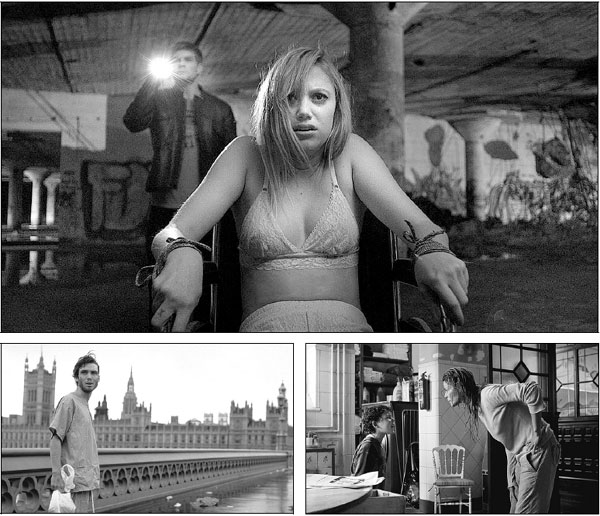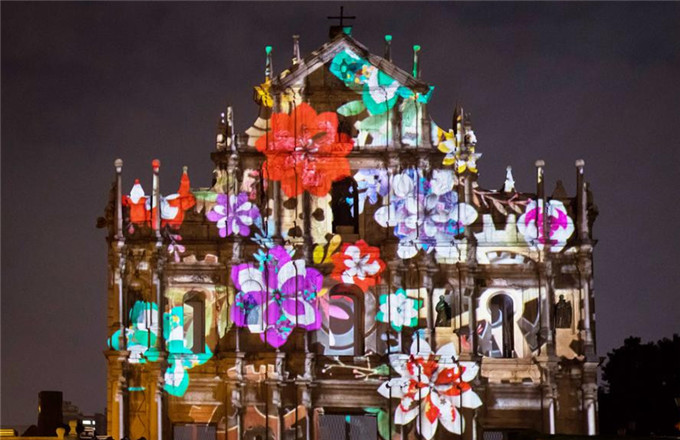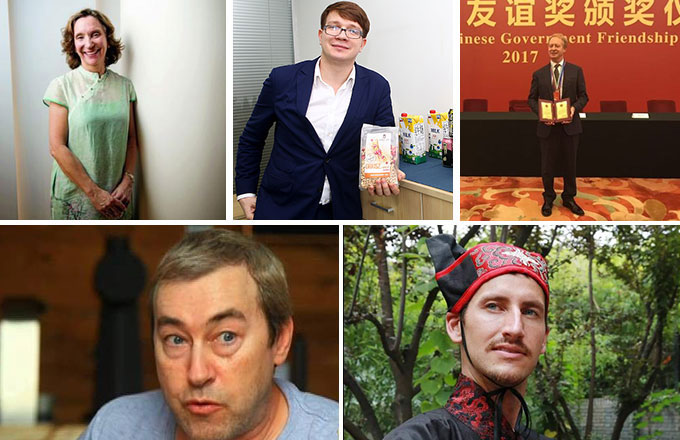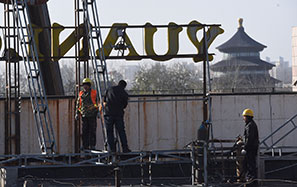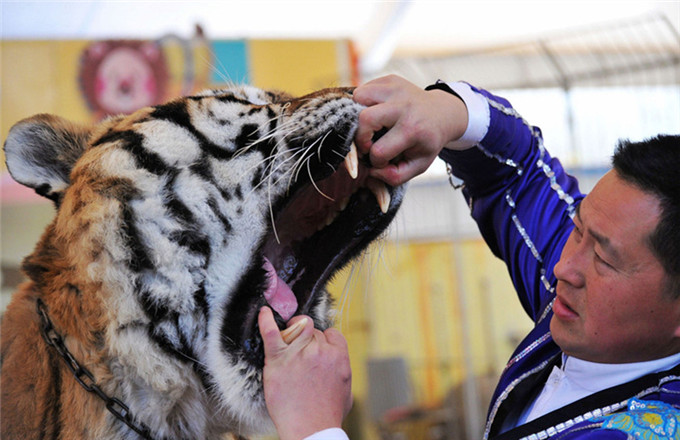The 21 best horror movies of this millennium
As Fede Alvarez's home invasion thriller with a twist Don't Breathe takes the US box offices by storm, we list the 21 best horror movies released since 2000
What makes a great millennial horror movie? The obvious answer is to look to the genre's post-2000 trends.
The early years of the new millennium brought with them a succession of Asian horror-inspired evil ghost movies and direct remakes, including The Ring (2002) and The Grudge (2004). One of the most talked-about trends was for so-called torture porn: the likes of the Hostel and Saw franchises, which lured in cinema goers with claims of endurance-testing depravity and gore, and paved the way for hundreds of imitators (far superior to both, arguably, was the Australian Wolf Creek, which missed its slot on the list below by the skin of its teeth).
Modern found-footage, too, has never really gone away, encompassing everything from monster movie Cloverfield, to Spanish zombie franchise, to the supremely jumpy Paranormal Activity series. In fact, with the forthcoming release of Blair Witch, a sequel to the seminal 1999 found footage horror The Blair Witch Project, it almost feels like we've come full circle on this particular trend.
What we've tried to do with the list below is avoid some of the obvious choices, and instead pick out some truly innovative, exciting films: horror movies which sit outside the obvious trends, or somehow subvert them. Here then, in chronological order, are our top 21 horror films released in the past 16 years.
1 In My Skin (Marina de Van, 2002): In this gory little slice of New French extremism, Esther, a woman with a demanding job and apparently happy relationship - an ideal situation, but one in which it can feel as if your body is just a cog in a system - sustains a nasty cut to the leg at a party. Intrigued by the fact that she feels no pain at the time of the incident, the young professional (played by the film's director, Marina de Van) becomes obsessed with her injury, and, by extension, her body itself: mutilating her limbs, repeatedly cutting into her skin, and eventually eating parts of own flesh.
Unsettlingly, de Van never offers any explicit explanation or justification for her character's actions. Even more unsettlingly, after a while Esther's destructive habit begins to make a weird sort of sense: what she's doing isn't self-harm so much as a bizarre form of self-love. If you've ever sat at your desk and felt strangely disconnected from your own physical self, you'll probably feel a queasy sense of recognition.
2 28 Days Later (Danny Boyle, 2002): Strictly speaking, 28 Days Later, a film often credited for revitalising the zombie genre, isn't really a zombie movie at all: its mindless antagonists are humans infected by the lab-engineered Rage Virus. For all intents and purposes, however, it's a zombie movie: pitting the afflicted masses against a few desperate survivors, in a world where all the usual power structures have broken down. But, crucially, its "zombies" aren't the slow, shuffling flesh-eaters of yore: instead the infected can run, while the viral disease they pass on to their victims takes effect almost instantly. The most enduringly haunting aspects of 28 Days Later, however, are its compelling vision of a post-apocalyptic Britain, and its uncompromising focus on human nature. It reminds us that fully cognizant human beings are often much more frightening than brain-dead infected ones.
3 Gozu (Takashi Miike, 2003): With the exception of The Blair Witch Project, Takashi Miike's Audition (1999) set the tone for millennial horror more than any other film, with its graphic cruelty, feminist subtext and bitter satirical bite. Four years later, the prolific Japanese auteur struck out on another new path - but one so crazed, so macabre, so logic-liquefying, that the film he found there is destined to remain a lunatic one-off. In Gozu, a young yakuza is ordered to kill his unstable mentor, a theoretically straightforward mission that leads to a string of unimaginable bizarreries and creep-outs. Genders switch, bodily fluids flow, and cow-headed apparitions stalk the corridors, while the childbirth-based climax - graphic, protracted, and too fabulously grotesque to spoil - makes ordinary labour look like a cakewalk.
4 The Descent (Neil Marshall, 2005): Horror went underground in 2005 with The Descent, a frightening movie set in a subterranean cave system, that took the refreshingly bold step of having an all-female cast. While Marshall's 2002 Dog Soldiers arguably felt like a very male kind of horror, the director went out of his way to make a different kind of film with The Descent, focusing on his female characters, their relationships, and their emotions. The combination of plausible personalities, all-too-believable inter-group tensions and a unique setting combine to make a monster movie that is both jumpy and psychologically chilling.
5 Inland Empire (David Lynch, 2006): A horror film? You betcha. Just as Mulholland Drive trapped us inside the disintegrating psyche of a would-be starlet, Lynch's epic, abrasive, wildly divisive follow-up charts the alleged comeback of faded actress Nikki Grace (an astonishing Laura Dern), who disappears down the rabbit-hole of her own delusions. The abyss she tumbles into is one of the scariest of its decade, offering no identifiable exit and bringing her face to face with ... well, her own face, in a ballooned-out form that's as nightmarish an image as Lynch has ever inflicted.
6 Trick 'r Treat (Michael Dougherty, 2007): Watching Michael Dougherty's anthology horror is like diving into a basket full of juicy, sugary Halloween goodies: among other delights, the director serves up a haunted lake, a twisty werewolf tale, and a killer with a nastily novel way of making lanterns. The autumnal, pumpkins-everywhere nostalgia that the film evokes is a very American nostalgia, but it's also a sensibility that will affect anyone who has ever enjoyed a certain type of domestic American slasher. Plus, there's something about the anthology film and the horror genre that works remarkably well: a sit back, relax, and let me tell you some scary stories tradition that harks back to the likes of MR James.
7 The Orphanage (J.A. Bayona, 2007): The Guillermo Del Toro-produced The Orphanage begins as a conventional but beautifully atmospheric supernatural chiller: a mother, Laura (Bel��n Rueda), her husband Carlos and their young adopted son Sim��n move to an abandoned orphanage, Laura's childhood home, where the son begins communicating with an unseen "friend". But things take a turn halfway through, when Sim��n disappears without trace, and Laura, driven frantic by grief, begins digging into half-forgotten secrets from her own childhood. Ultimately, The Orphanage is all about the parent-child relationship and the lengths a mother will go to for a son - and it's Rueda's stunning performance that gives the film its emotional heart.
8 Inside (Julien Maury and Alexandre Bustillo, 2007):
Inside is one of the most satisfyingly blood-drenched horror movies you're ever likely to encounter - and, thanks to the pregnancy theme and the no holds barred gore, it's also fascinatingly transgressive. Heavily pregnant Sarah (Alysson Paradis), mourning her late partner and struggling with ambiguous feelings about the soon-to-be-born child inside her, is stalked and terrorised by a woman desperate to steal her unborn baby (a formidable B��atrice Dalle). An early shot of a pair of scissors, piercing Sarah's exposed belly as she sleeps, perfectly epitomises the film's heartstopping juxtaposition of vulnerability and violence. From then on, things only get more intense.
9 The Mist (Frank Darabont, 2007): Frank Darabont's gripping Stephen King adaptation The Mist is remembered for its supremely devastating ending, which dared to go a shade bleaker than the source material. But, while the final twist might be its most disturbing part, the rest of the movie, about a mysterious mist which descends over a US town, swiftly followed by an array of terrifying monsters, isn't exactly warm and cheery. Thomas Jane plays lead David, who barricades himself in a grocery store along with his young son and a small group of survivors - but paranoia and religious mania soon prove just as dangerous as the beasts outside.
10 Teeth (Mitchell Lichtenstein, 2007): This off-beat comedy horror is a wicked tongue-in cheek treat: a gloriously literal 21st-century realisation of the Vagina Dentata myth, with a dark sense of humour and nicely unsubtle feminist subtext. (If you're unfamiliar with the term, it's essentially exactly what it sounds like: a sharp-fanged vagina, with the ability to bite and sever any unwanted intruders.) Virginal student Dawn (Jess Weixler) is horrified to discover she has the mutation ... but, after a series of encounters with a rapist, a bragging classmate and lustful stepbrother, she begins to see the advantages.
11 Martyrs (Pascal Laugier, 2008): A favourite among hardcore horror fans, Martyrs is often labelled "torture porn" - and, on a superficial level, that's exactly what it is. But the really horrific thing about this bleak French shocker is the way in which it subverts expectations, imbuing its scenes of graphic torture with a sense of vivid, heart-breaking pity, and forcing its audience to really feel everything they see on screen. Without giving away too much, it's also one of the most twisty horror movies around: it begins as a grimly intense home invasion, with what appears to be a supernatural element (swiftly revealed to be something else altogether), then takes a dramatic tonal shift halfway through.
12 Let The Right One In (Tomas Alfredson, 2008): Eight years on, the eerie power of Alfredson's Eighties-set Swedish vampire tale (based on the equally powerful book by John Ajvide Lindqvist) remains undimmed. The story of 12-year-old outcast Oscar and his friendship with vampire Eli, who has "been 12 a long time", manages to be both uncompromisingly brutal and achingly tender all at once.
It's also a surprisingly hopeful film: one where very real horrors - Eli's thirst for blood, frightening schoolyard bullying and subtle hints of child abuse and paedophilia - sit alongside a moving pre-teen love story, and an ending so improbably uplifting, it's almost impossible not to cry when watching. The film's visuals also leave their mark: watch it late at night, and you'll dream of bleak, almost-empty urban playgrounds and white snow against a cold black sky.
13 Drag Me To Hell (Sam Raimi, 2009): After a decade spent on Spider-Man, Raimi leapt back into the mainstream-horror fray with this twisted fable about a gypsy curse, which faltering bank employee Alison Lohman brings down on herself when a bankrupted crone (Lorna Raver) begs her for leniency. Channelling occult classics such as Night of the Demon, but cooked up with Raimi's trademark go-for-broke exuberance, the movie yanks its poor heroine pitilessly to the brink of an inferno, unleashing ever-wilder set pieces.
14 The House of The Devil (Ti West, 2009): In this meticulously crafted, gloriously retro 1983-set Ti West throwback, which pays an homage to a certain type of Eighties "babysitter in peril" horror movie, suspense is masterfully built - even when not all that much seems to be happening. College student Samantha (Jocelin Donahue) reluctantly agrees to take on an unusual-sounding babysitting job, and in the film's best scenes she's alone, oblivious, trying to relax in a creepy edge of town mansion. We, the audience, however, are in a slightly more privileged position: able to see the net slowly closing in.
15 Kill List (Ben Wheatley, 2011): Frustratingly ambiguous with a cool disregard for traditional movie-making templates, Kill List might seem like a confusing film when watched for the first time, but it's also an assuredly brilliant one. Ben Wheatley's story of two sparring hitmen, contracted to carry out four murders, starts off as a character-driven crime movie, but things swiftly take a turn for the horrible. The increasingly unsettling atmosphere is matched by an unsettlingly illogical, at times almost dreamlike plot, punctuated by some extreme violence, and capped off with a truly shocking occult-themed ending. Wheatley deliberately keeps the audience in the dark about exactly what is going on - but his two victims are even more clueless, helping us share their growing unease.
16 Berberian Sound Studio (Peter Strickland, 2012): In this story of a British sound engineer employed on a Suspiria-esque Seventies Giallo thriller, Peter Strickland stylishly blurs the lines between cinema and real-life, draws a meatily compelling performance from star Toby Jones, and has fun reminding everyone that, when it comes to the creation of fear, what we hear is often so much more disturbing than what we see.
17 We Are What We Are (Jim Mickle, 2013): Set in rain-swept upstate New York, Mickle's "re-imagining" of Jorge Michel Grau's Mexican horror movie of the same name is a claustrophobic coming of age story with a spot of cannibalism thrown in for good measure. It tells the story of the Parkers, a family led by a repressive patriarch, with a grim annual ritual dating back to the time of their Pilgrim ancestors.
It's bit of a slow burner - but the cathartic final dinner table scene, which manages to be horrifically gory and wonderfully uplifting all at once, is well worth the wait. A horror movie rarity, this US remake also enjoys the distinction of being both vividly different to and a shade more powerful than its source material.
18 Evil Dead (Fede Alvarez, 2013): Reboots of classic horror films often get a bad rap, but with his Evil Dead, Uraguayan director Fede Alvarez proved that taking a risk can pay off. Instead of aping the offbeat humour of Sam Raimi's much-loved supernatural franchise and throwing in a tonne of CGI, the film unashamedly opts for old school effects-based gore and action packed brutality - and the result is one of the most bloodily creative horror movies of recent years. Despite the new cast and higher budget, it also feels spiritually in sync with its Eighties predecessor. His recent Don't Breathe didn't have quite the same edge, but was still fantastically tense and fun, confirming Alvarez's reputation as a new horror talent to watch out for.
19 The Babadook (Jennifer Kent, 2014): The crucial thing about The Babadook, the debut feature of Australian director Jennifer Kent is the fact that it's really two films in one. On its most immediately obvious level, it's a spectacularly scary supernatural thriller about a character from a sinister children's book: the spindly-fingered, top hat-wearing Babadook, who can be seen lurking in every dark corner: a horrible shadowy thing, always catching at the edge of your vision and making your skin suddenly prickle with dread whenever you've been lulled into a false sense of safety. But it's also a heartbreaking drama about a mother dealing with grief and mental illness after the death of her husband, and struggling to cope with her behaviorally challenged six-year-old son. The film's power, of course, lies in the way these two threads are seamlessly, expertly merged together - and from the extraordinary performances given by Essie Davis, as lead Amelia, and Noah Wiseman as her son Samuel.
20 It Follows (David Robert Mitchell, 2015): A dreamy, ever so slightly melancholy picture of suburban teenage life combines with a genuinely terrifying antagonist in David Robert Mitchell's startlingly original, beautifully shot It Follows: a horror movie about a curse passed on through sexual intercourse. Anyone "infected" (and the word feels appropriate, given the obvious STD parallels) will find themselves followed by a demonic entity, which can take the form of any man or woman, steadily, relentlessly walking towards them. Maika Monroe is perfectly cast as lead Jay, who falls victim to the curse, thanks to an unscrupulous "boyfriend", and must decide how to engineer her fate ... and who to pass the curse on to.
21 The Witch (Robert Eggers, 2016): Robert Eggers's 17th-century set horror movie and directorial debut is seriously scary stuff. The Puritan-era, edge of a dark wood setting is pushed to its utmost, imbuing the film with a sense of crawling, fetid dread, and psychologically transporting its audience to more God-fearing age, in which witchcraft wasn't a joke, but a plausible, always close-at-hand threat. Just in case absolute terror isn't enough, there's also a talking, possibly Satanic goat: the majestic, monstrous Black Philip. What more could any discerning horror fan want?
|
Clockwise from top: It Follows (2015); The Orphanage (2007); 28 Days Later (2002).Photos Provided To China Daily |


